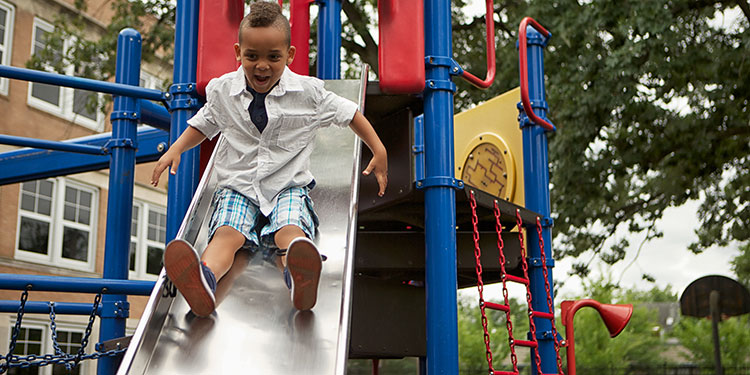C3: Identifying Who & What’s Happening
1. Overview
Using picture cards, give your child practice identifying the two parts of a sentence: who it’s about and what’s happening. This is a continuation of Introducing Sentences: Who It’s About (C1) and What’s Happening (C2), but with the addition of picture cards. This will challenge your child by making him think abstractly.
“The boy goes down the slide.” The who it’s about part of the sentence is “the boy.”
The what’s happening part is “goes down the slide.”
2. Materials
For this activity you will need:- Picture cards that you can use as inspiration for creating sentences
3. Activity
Video: How to play Identifying Who & What’s Happening
Before you start the game, remind your child what a sentence is and how it can be divided into parts.
Adult: Do you remember what we learned about very little stories? What do we call a very little story? Child: Sentence? Adult: Yes, a sentence is a very little story. A sentence has two parts, a who it’s about part and a what’s happening part. What are the parts? Child: Who it’s about and what’s happening. Adult: That’s right.Now give him different sentences to identify the who it’s about part (the subject) and the what’s happening part (the predicate). Use the picture cards for inspiration.
Adult: [holding up card] Here is a sentence: “The dog chews on a bone.” What is the who it’s about part in that sentence? Child: The doggy! Adult: Yes. What is the what’s happening part? Child: Um… Adult: You said the dog is who it’s about. So, what’s happening? What is the dog doing in the story? Child: Chews on a bone! Adult: That’s right. “The dog chews on a bone.” We know this is a sentence because it has a who it’s about part and a what’s happening part.Your sentences should have action verbs in various tenses: past, present, and future. Do at least ten of these examples in a session. Revisit this activity frequently to make sure that your child has a firm understanding of the two parts of a sentence. ↑ Top
4. Confidence Builder
If your child struggles with this activity, repeat the two previous activities until he has a firm understanding. For best results, follow the scripts closely. ↑ Top5. Small Groups (2-5 children)
Lesson Objective: Using picture cards for visual aids, children will be able to identify the two parts of a spoken sentence. GELDS (Georgia Early Learning & Development Standards): CLL6.3d (Activities for this standard will be increased in difficulty to match children’s age.) Georgia Standards of Excellence: ELAGSEKSL2 Common Core State Standards: CCSS.ELA-LITERACY.SL.K.2 Additional Materials:- optional: music
Leave a Reply
